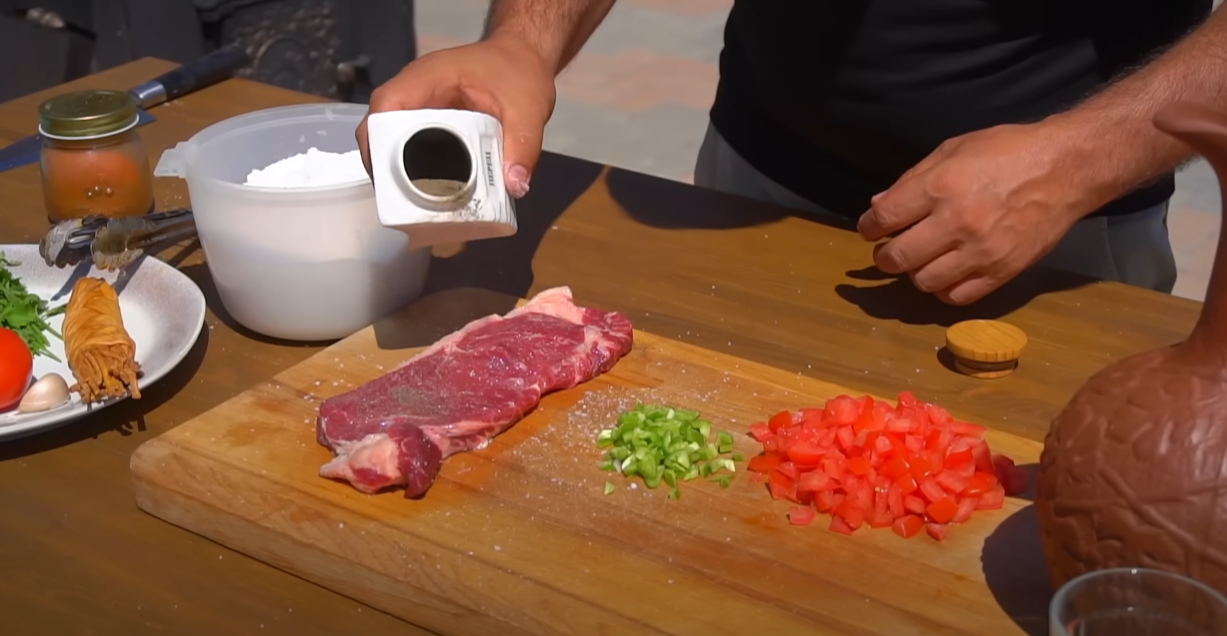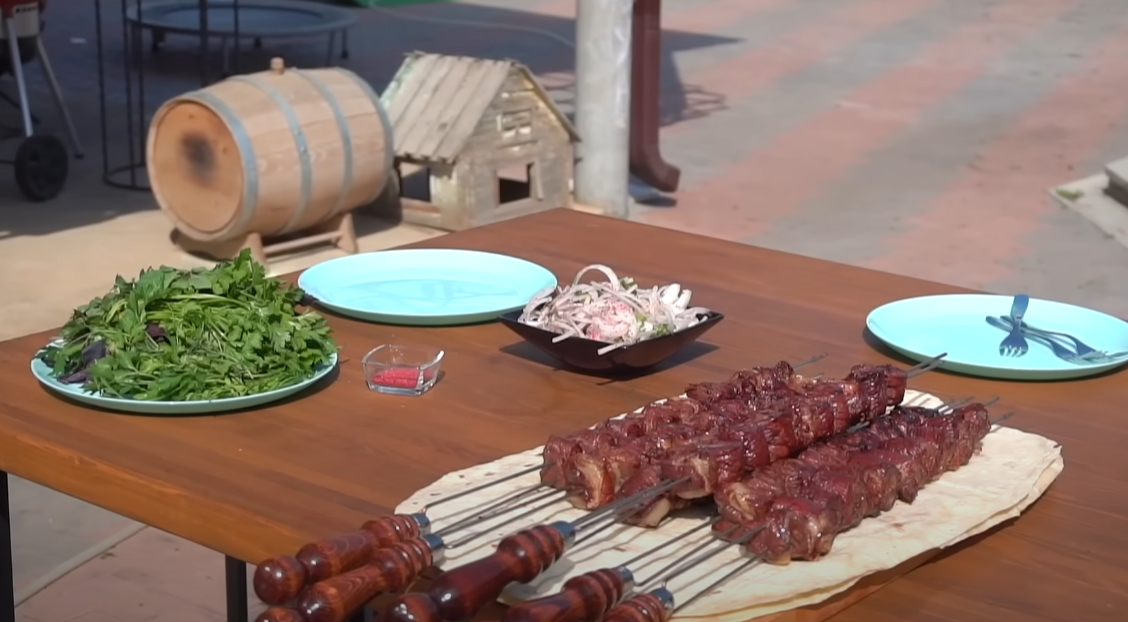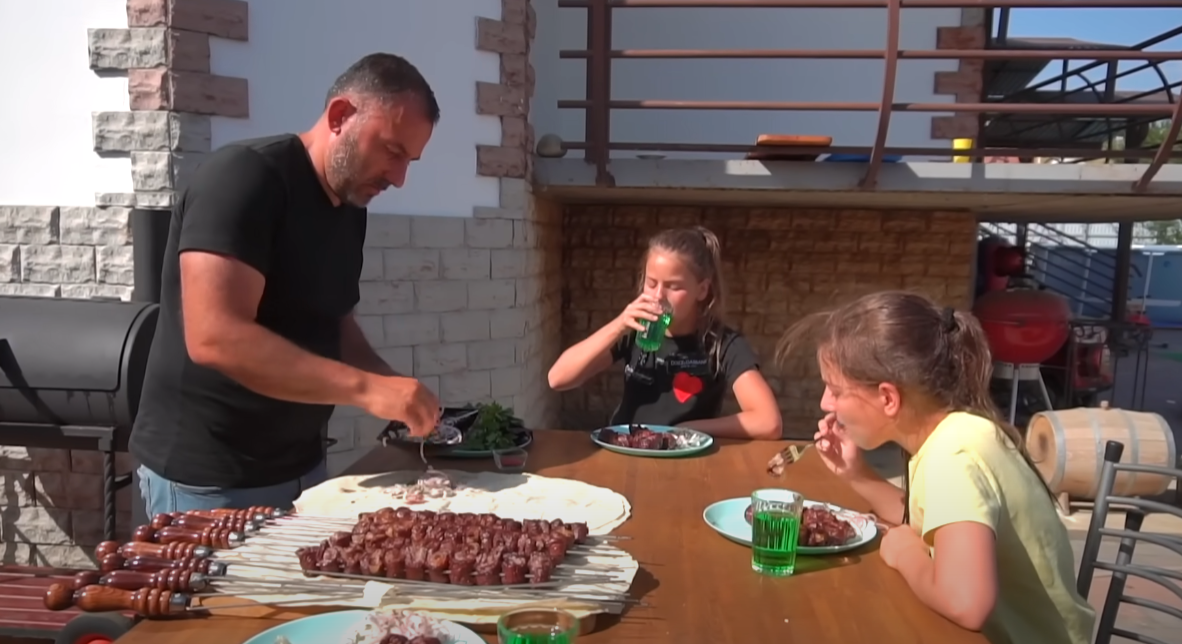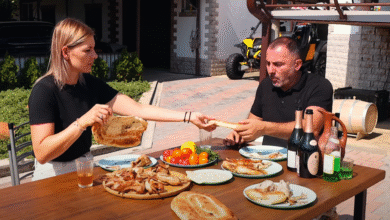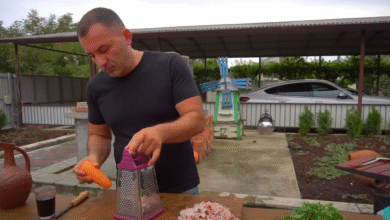Food
Fried Eggs with Vegetables – GEORY KAVKAZ
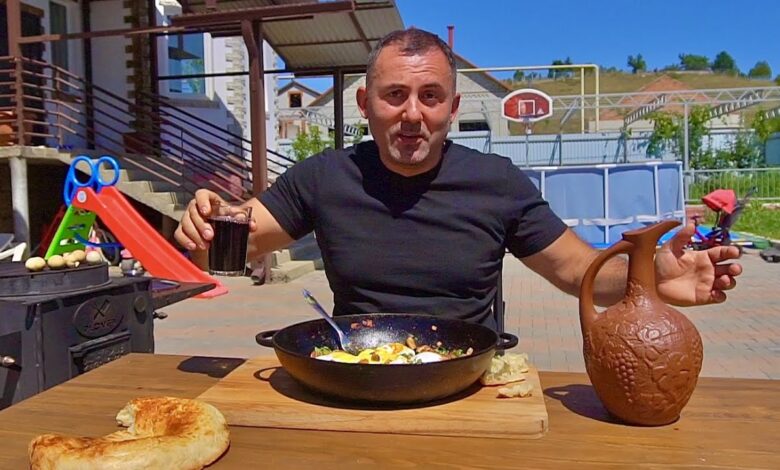
🥘 1. INGREDIENTS
🧂 Main Ingredients (Serves 2–3):
- 4 large eggs
- 2 tbsp vegetable oil (sunflower oil preferred)
- 1 medium onion, sliced into thin rings
- 1 bell pepper, cut into thin strips
- 1 medium tomato, diced or coarsely chopped
- 1–2 garlic cloves, thinly sliced (optional)
- Salt and freshly ground black pepper, to taste
🌿 Optional Garnishes:
- Fresh parsley or dill, chopped
- Crumbled cheese (feta or goat cheese)
- Chili flakes or smoked paprika for a spicy kick
🔪 2. PREPARATION STEPS
🥄 A. Vegetable Sauté:
- Heat oil in a medium-sized pan over medium heat.
- Add onion rings and sauté for 2–3 minutes until slightly softened.
- Add bell pepper strips and cook for another 2 minutes.
- Stir in tomatoes and garlic. Let everything cook together for 3–4 minutes, until juicy and aromatic.
- Season with salt and black pepper to taste.
🥄 B. Egg Placement:
- Spread the vegetables evenly in the pan.
- Use a spoon to make 4 shallow wells in the vegetables.
- Crack 1 egg into each well, carefully keeping yolks whole.
🔥 3. COOKING METHOD
🕒 A. Cook Covered:
- Cover the pan with a lid to trap heat.
- Cook for 4–6 minutes, depending on your preferred doneness:
- Soft yolks: ~4 minutes
- Medium: 5 minutes
- Well-done: 6+ minutes
- Watch for whites to fully set and yolks to reach desired consistency.
🍽 4. SERVING & GARNISH
🧄 Finishing Touch:
- Once eggs are cooked, remove the pan from heat.
- Sprinkle with fresh herbs like chopped parsley or dill for brightness.
- For more depth, add a light drizzle of olive oil, a pinch of paprika, or a dash of hot sauce.
🥖 Serving Ideas:
- Serve hot, straight from the skillet, ideally with:
- Crusty country-style bread
- Flatbread or lavash
- Steamed rice
- Fresh cucumber & tomato salad on the side
✅ 5. TIPS & VARIATIONS
📌 Cooking Tips:
- Use a non-stick or cast iron skillet for best results.
- Keep the vegetable layer even, so eggs cook uniformly.
- Avoid moving the eggs once cracked to maintain the presentation.
🔄 Variations:
- Add mushrooms or spinach for extra texture and nutrition.
- Grated cheese can be sprinkled over the vegetables before cracking the eggs.
- For extra richness, crack the eggs into butter instead of oil.

